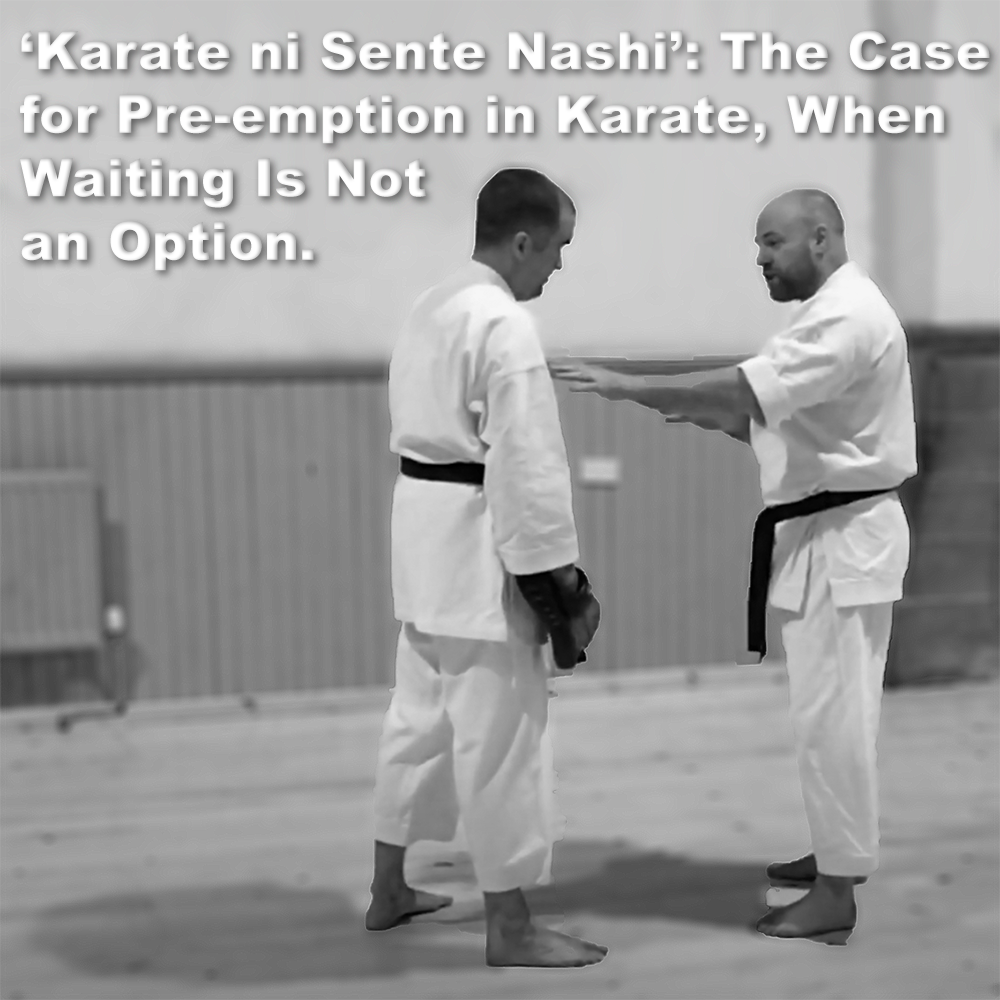
(Approx 2 minute 15 second read)
The way that karate is mostly taught today seems to always start with blocking. Any step-kumite, drill, or application from kata is shown with a defender blocking an attack before performing a counter.
.
In my opinion, this is an overemphasis on blocking as the primary means of defense.
.
In reality, effective defense isn’t about stopping an attack dead in its tracks. If you can’t avoid an attack, then you need to consider pre-emption. Whether that means redirecting, deflecting, or evading the attack, what matters is putting yourself in a safer position.
.
The phrase “Karate ni sente nashi” (空手に先手なし), often translated as “there is no first attack in karate”, is frequently cited as a reminder that, as karateka, we must not attack first.
.
To me, this is a misinterpretation. ‘Karate ni sente nashi’ stresses acting with strategic intent. It doesn’t prohibit initiating action but rather encourages you to do so in a measured and calculated way.
.
The key lies in understanding the difference between being the aggressor or taking the initiative.
.
If you think about it logically, in the face of a determined attacker, waiting for the first blow so that you can block, then counter, doesn’t make sense. You might get yourself seriously injured, or worse.
.
The opening movements of kata, while categorized as “uke” – mostly translated as “block” – could also be viewed as preemptive measures.
.
Rather than simply waiting for an opponent to attack, you can act decisively when necessary. If you translate “uke” as “to receive” – its correct translation – it becomes a very different meaning, beyond just simply blocking. The whole movement hints at preemption and strategic positioning.
.
“Karate ni sente nashi” then isn’t about being inactive or waiting to be attacked before responding.
.
The movements most people practice as blocks should not be seen as purely ‘stopping’ techniques. This is where blocking starts to fail. By trying to stop an incoming force dead in its tracks – even if your technique is powerful – you not only slow your response but also give the attacker another opportunity to strike.
.
If you were attacked with a weapon, such as a crowbar – as I once was – and waited to block, you would have stood no chance. In such situations, pre-emption is the best option. Waiting for an attacker to launch a physical attack before you respond is just crazy.
.
It is also recognized in self-defense law if you feel your life is under threat. Additionally, it was a core aspect of traditional karate, as noted in the writings of several famous pioneering masters.
.
Kenwa Mabuni wrote: “When faced with someone who disrupts the peace or who will do one harm, one is as a warrior in battle, and so it only stands to reason that one should seize the initiative and pre-empt the enemy’s use of violence. Such action in no way goes against the precept of no first attack …the expression ‘karate ni sente nashi’.”
.
So, the next time you step onto the dojo floor, remember this: karate is not about waiting for an attack – it’s about acting wisely. If you have no choice, pre-emption isn’t aggression; it’s survival. And in a moment of real danger, it may just save your life.
.
Written by Adam Carter – Shuri Dojo
.
.
Photo Credit: With thanks to Iain Abernethy.
